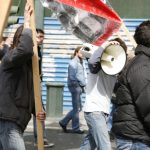The Gist
One of the primary concerns of law enforcement generally, and state alcohol regulators in particular, is the war on drunk driving. Many law-related initiatives have been adopted over the years to fight the scourge of drunk driving.
- Over 20 years ago, the state-by-state campaign to lower the official Blood Alcohol Content (BAC) threshold used to determine the legal limit for driving while intoxicated began; today, every state across America follows the 0.08 BAC standard.
- Ten years ago, a handful of states started creating special “DUI Courts” to process intoxicated and impaired driving arrests; today, the judicial systems in over 20 states maintain special DUI courts.
- Five years ago, New Mexico was the first state to impose a mandatory Auto Ignition Monitor (AIM) requirement on defendants convicted of their first DUI. Today, over 13 states have adopted similar requirements as a means of reducing the risk of recidivist DUI violators.
Each of these tools has been, and continues to be, instrumental in the fight against drunk driving. However, the ultimate safeguard against drunk driving remains actual law enforcement itself. The ability of police to identify and interdict intoxicated drivers has always been the frontline against drunk driving.
This year, The United States Supreme Court will examine how police exercise their powers to fight drunk driving. The high court’s decision in the case of Navarette v. State of California, Case No: 12-9490, likely will have a significant impact on traffic stop cases in state and federal courts.
The main question presented by Navarette is: Does the Fourth Amendment require an officer who receives an anonymous tip regarding a drunken or reckless driver to corroborate dangerous driving before stopping the vehicle?
The Relevant Facts
In 2008, Lorenzo and Jose Navarette were traveling on a California highway in a pickup truck with four large bags of marijuana in the bed. Unbeknownst to the brothers, an anonymous caller had alerted the California Highway Patrol (CHP) to a “reckless driver,” identifying the make and color of the pickup truck and providing license plate information.
A CHP officer spotted the Navarettes’ vehicle; however, the officer did not observe reckless driving or any other illegal activity while following the vehicle. Based solely upon the anonymous tip, the officer conducted a traffic stop.
The Navarette brothers were charged with transportation of marijuana. After losing a motion to suppress the marijuana evidence against them, the brothers pleaded guilty and were sentenced to
90 days in jail followed by an extensive probation.
The California appellate courts affirmed their conviction. The Navarette brothers subsequently sought review by the U.S. Supreme Court on constitutional grounds that the warrantless stop and seizure – based solely on an anonymous tip – constituted a violation of their Fourth Amendment rights.Certiorari review was granted, and the case is set to be heard on January 21, 2014.
How The U.S. Supreme Court Views How The U.S. Supreme Court Views Drunk Driving
The U.S. Supreme Court has recognized that drunk drivers constitute a serious danger to the public. See Virginia v. Harris, 558 U.S. 978, 978 (2009) (Roberts, C.J., dissenting from denial of certiorari); Colby J. Morrissey, Note, Anonymous Tips Reporting Drunk Driving: Rejecting a Fourth Amendment Exception for Investigatory Traffic Stops, 45 New Eng. L. Rev. 167, 190-194 (2010).
However, the Court also has established precedent defining what is needed for law enforcement to make a warrantless stop predicated on an anonymous tip. In Florida v. J.L., 529 U.S. 266 (2000), the U.S. Supreme Court reaffirmed that law enforcement may conduct a stop only where an anonymous tip has a “moderate indicia of reliability” and a “tendency to identify a determinate person.” The decision in J.L. also rejected the state’s request to adopt a “firearms exception” to this rule, based upon the dangerousness of an armed suspect. The Supreme Court in J.L. noted that such an exception would subject citizens to intrusive police searches based upon a mere “bare-boned tip about guns.”
However, that precedent has not proven to be as definitive as it might have looked when it was issued in 2000. Justice Kennedy noted in his concurrence in J.L. that while a truly anonymous informant has “not placed his credibility at risk and may lie with impunity,” even anonymous tips may “have certain features, either supporting reliability or narrowing the likely class of informants, so that the tip does provide the lawful basis for some police action.” 529 U.S. at 275 (Kennedy, J., concurring).
More to the point, since the Supreme Court’s decision in J.L., a number of federal and state courts appear to have fashioned a de facto “drunk driver” exception to the corroboration requirement. For example, only one year after J.L.’s unanimous rejection of seizures based on uncorroborated anonymous tips involving firearms, 529 U.S. at 272-273, the U.S. Court of Appeals in United States v. Wheat, 278 F.3d 722 (8th Cir. 2001) approved a vehicle stop without corroboration of an anonymous tip of reckless driving, largely due to the bomb-like danger of an “erratic and possibly drunk driver.” 278 F.3d at 736-737. The Eighth Circuit found that the danger justified an immediate stop of the vehicle without any corroboration of dangerous driving, but specifically noted that “when the officer does not effect an immediate stop of a potentially drunk driver, the force of this justification rapidly diminishes.” 278 F.3d at 724-725,737 n. 13 (emphasis in original).
Likewise, relying heavily on Wheat’s analysis of the dangers posed by drunk drivers, the California Supreme Court in People v. Wells, 38 Ca1.4th 1078, 45 Cal.Rptr.3d 8, 136 P.3d 810 (2006), also approved an officer’s immediate stop of a vehicle without any corroboration of dangerous driving, dismissing the officer’s failure to observe such driving as “not significant,” in part because “the officer in this case stopped defendant’s van immediately after spotting it.” Wells, 38 Ca1.4th at 1088.
In addition to federal appellate courts, state courts also have recognized a de facto drunk driver exception to J.L. The Supreme Courts of Vermont, Iowa and Wisconsin have held that J.L. does not prevent an anonymous tip from constitutionally justifying an immediate vehicle stop “even when the investigating officer is unable to corroborate that the driver is operating the vehicle recklessly and therefore unlawfully.” See State of Vermont v. Boyea, 171 Vt. 401, 765 A.2d 862 (Vt. 2000), State of Iowa v. Walshire, 634 N.W. 2d 625 (Iowa 2001), and State of Wisconsin v. Rutzinski, 241 Wis.2d 729, 623 N.W.2d 516 (2001). Since the Eighth Circuit decided Wheat in 2001, Tennessee, Delaware and Hawaii also followed suit and recognized drunk driving exceptions to J.L.. See State of Tennessee v. Hanning, 296 S.W. 44 (Tenn. 2009), Bloomingdale v. State of Delaware, 842 A.2d 1212 (Del. 2004), and State of Hawaii v. Prendergast, 83 P 74 (Haw. 2004). See also Melanie D. Wilson, Since When Is Dicta Enough To Trump Fourth Amendment Rights? The Aftermath of Florida v. J.L., 31 Ohio N.U.L. Rev. 225-229 (2005).
This new de facto exception for drunk driving stops was actually addressed by the Supreme Court’s current Chief Justice, John Roberts, in a 2009 dissent from the Court’s denial of certiorari in the case of Virginia v. Harris, where the Chief Justice identified not only the dangers posed by drunk driving, but also “the enhanced reliability of tips alleging illegal activity in public, to which the tipster was presumably an eyewitness…” Virginia v. Harris, 558 U.S. 978, 980 (2009)(Roberts, C.J., dissenting from denial of certiorari).
So, has the Court taken the Navarette case to overturn its prior precedent in J.L.?
Not necessarily.




Leave a Reply